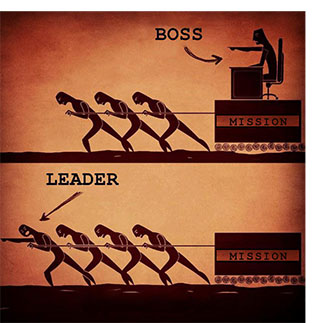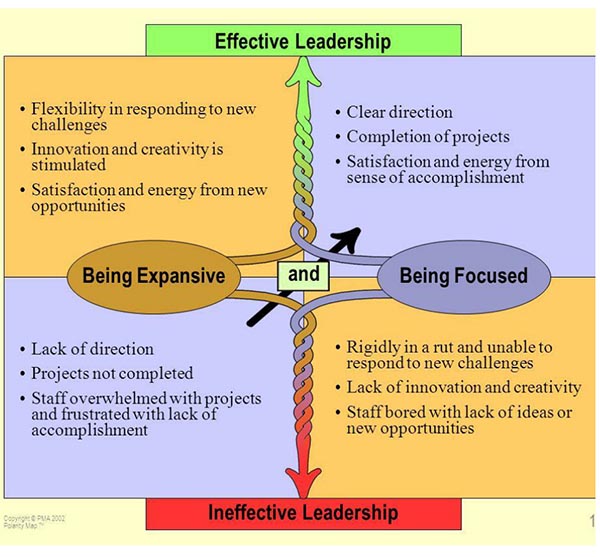No Results Found
The page you requested could not be found. Try refining your search, or use the navigation above to locate the post.

Preparedness is something that…well…you have to prepare for. It takes time and effort to prepare for things which may occur in the future. Many of us try to plan for inevitabilities such as saving for a daughter’s wedding, planning for a child’s college education, or even pre-arranging our own funerals. Hopefully, much thought has been given to what would happen in the event of a job loss or other incidents having a negative financial and/or emotional impact on our families. Preparing for future events is an important part of life, and it is something we do routinely. However, it is important to prepare not just for expected events, but also for things that are not foreseen.
Identifying what to be prepared for can be quite the challenge. According to Dictionary.com, preparation is defined as “to make ready or suitable in advance for a particular purpose or for some use, event, etc.”
Since preparedness takes many forms, let’s consider preparing for a day-hike. We need to make sure our shoes/boots and clothes are appropriate for where we are going. We need to have sufficient food and water for the duration of the hike. The cell phone needs to be fully charged and we should notify someone of where we’re going and when we expect to return. You should also consider packing a poncho, a compass, some energy bars, something to drink/purify water, a good knife, a flashlight, sunscreen, and bug repellent. We need to prepare for weather changes, injuries, or if we leave the trail for some reason, and/or become disoriented.
Preparing for changing conditions applies not only to a day-hike, but to life in general. As you can see, anticipating, developing, and planning are important for a successful day-hike outcome.
From a business perspective, we need to look at things in the same general way—be prepared for the expected. We should also be prepared for the unexpected and what may happen should conditions change. Some of the obvious points of concern include employee welfare, financial stability, and continued customer support during a challenging time. A Continuity of Operations Plan (COOP) should be developed to help ensure the company can continue to function and support its internal and external stakeholders.
The Federal Emergency Management Agency (FEMA) provides general COOP information and planning tools. While this document is geared toward government, the overall philosophy relates to a broad spectrum of applications. It is important to note, of the first four phases of COOP activation, the first is preparedness and readiness.
Communications planning is also an important part of preparedness. When an adverse event occurs, how are you going to communicate pertinent information to your audience? It is incumbent upon organizations to develop, train, and exercise a crisis communication plan. A crisis communication plan helps prepare an organization to communicate accurately and confidently during an emergency. It also addresses different audiences and provides a strategy for communicating information specific to stakeholders’ interests and needs. The image of the organization can be positively or negatively impacted by public perceptions of the handling of the incident. A well- trained and practiced crisis communication plan can improve an organization for communication success.
As you can see, Preparedness Is Not an Accident®. It takes a concentrated effort to look into the future and anticipate what may happen—then figure out how you are going to deal with it. Our experts help corporations and agencies identify and address these unforeseen crises. Integrating a continuous cycle of Assessment, Planning, Solution development, Training, Exercising, and Reassessment (The APSTER ProcessTM) increases the greatest level of preparedness and ensures that Preparedness Is Not an Accident®.

Relationships between team members, partners, and customers are at the core of SummitET’s values. The membership with TAG Alliances demonstrates SummitET’s commitment to information sharing and forging new partnerships across professional services firms.
“Our members recognize that authentic relationships are the cornerstone of effective collaborations. This personalized approach allows our professional services firms to powerfully leverage their own experts and those of their international counterparts to provide clients with complete solutions,” Richard Attisha, President & CEO of TAG Alliances comments. “It is our great pleasure to have SummitET join TAG Alliances with its unique expertise in business continuity and preparedness solutions.”
Learn more about SummitET and TAG Alliances here.

About SummitET
Summit Exercises and Training LLC (SummitET®) is a U.S.-based, veteran-owned company that provides proven full spectrum preparedness solutions through industry-leading experts and impeccable customer service. Our diverse team supports corporate and governmental partners in developing solutions that address issues of critical infrastructure, radiological and emergency preparedness, cybersecurity, workplace safety, active shooter programs, counterterrorism, strategic communications and other disaster-related training.
About TAG Alliances
TAG Alliances® is comprised of three divisions: TAGLaw®, TIAG® (The International Accounting Group), and TAG-SP®. TAGLaw is an international alliance of more than 160 independent law firms. TIAG is an international alliance of 115 independent accounting firms. TAG-SP is a complementary association of strategic business partners. Collectively, TAG Alliances members provide legal, accounting, financial, and business support services on a worldwide scale. With approximately 18,000 professionals in over 290 member firms, and more than 760 offices in 110 countries, members of TAG Alliances serve tens of thousands of clients from all industry and commercial sectors. TAG Alliances is consistently recognized as one of the Top 10 alliances of accounting and law firms in the world. Learn more at www.TAGAlliances.com.
Summit Exercises and Training LLC (SummitET®), a Preparedness Solutions Company®, joins one of the world’s largest multidisciplinary alliances of independent professional services firms. TAG Alliances is a coalition of 290-plus member firms in more than 110 countries representing legal, accounting, and other professional services firms’ commitment to providing high-quality, cost-effective, and value-driven services to member firms and their clients.
“We are constantly learning and understanding how we can be better prepared as a global community,” said John Duda, CEO of SummitET and new member of TAG Alliances. “We aim to contribute our preparedness solutions expertise and best practices to the diverse TAG Alliances community.”
Relationships between team members, partners, and customers are at the core of SummitET’s values. The membership with TAG Alliances demonstrates SummitET’s commitment to information sharing and forging new partnerships across professional services firms.
“Our members recognize that authentic relationships are the cornerstone of effective collaborations. This personalized approach allows our professional services firms to powerfully leverage their own experts and those of their international counterparts to provide clients with complete solutions,” Richard Attisha, President & CEO of TAG Alliances comments. “It is our great pleasure to have SummitET join TAG Alliances with its unique expertise in business continuity and preparedness solutions.”
Learn more about SummitET and TAG Alliances here.

About SummitET
Summit Exercises and Training LLC (SummitET®) is a U.S.-based, veteran-owned company that provides proven full spectrum preparedness solutions through industry-leading experts and impeccable customer service. Our diverse team supports corporate and governmental partners in developing solutions that address issues of critical infrastructure, radiological and emergency preparedness, cybersecurity, workplace safety, active shooter programs, counterterrorism, strategic communications and other disaster-related training.
About TAG Alliances
TAG Alliances® is comprised of three divisions: TAGLaw®, TIAG® (The International Accounting Group), and TAG-SP®. TAGLaw is an international alliance of more than 160 independent law firms. TIAG is an international alliance of 115 independent accounting firms. TAG-SP is a complementary association of strategic business partners. Collectively, TAG Alliances members provide legal, accounting, financial, and business support services on a worldwide scale. With approximately 18,000 professionals in over 290 member firms, and more than 760 offices in 110 countries, members of TAG Alliances serve tens of thousands of clients from all industry and commercial sectors. TAG Alliances is consistently recognized as one of the Top 10 alliances of accounting and law firms in the world. Learn more at www.TAGAlliances.com.
Summit Exercises and Training LLC (SummitET®), a Preparedness Solutions Company®, joins one of the world’s largest multidisciplinary alliances of independent professional services firms. TAG Alliances is a coalition of 290-plus member firms in more than 110 countries representing legal, accounting, and other professional services firms’ commitment to providing high-quality, cost-effective, and value-driven services to member firms and their clients.
“We are constantly learning and understanding how we can be better prepared as a global community,” said John Duda, CEO of SummitET and new member of TAG Alliances. “We aim to contribute our preparedness solutions expertise and best practices to the diverse TAG Alliances community.”
Relationships between team members, partners, and customers are at the core of SummitET’s values. The membership with TAG Alliances demonstrates SummitET’s commitment to information sharing and forging new partnerships across professional services firms.
“Our members recognize that authentic relationships are the cornerstone of effective collaborations. This personalized approach allows our professional services firms to powerfully leverage their own experts and those of their international counterparts to provide clients with complete solutions,” Richard Attisha, President & CEO of TAG Alliances comments. “It is our great pleasure to have SummitET join TAG Alliances with its unique expertise in business continuity and preparedness solutions.”
Learn more about SummitET and TAG Alliances here.

About SummitET
Summit Exercises and Training LLC (SummitET®) is a U.S.-based, veteran-owned company that provides proven full spectrum preparedness solutions through industry-leading experts and impeccable customer service. Our diverse team supports corporate and governmental partners in developing solutions that address issues of critical infrastructure, radiological and emergency preparedness, cybersecurity, workplace safety, active shooter programs, counterterrorism, strategic communications and other disaster-related training.
About TAG Alliances
TAG Alliances® is comprised of three divisions: TAGLaw®, TIAG® (The International Accounting Group), and TAG-SP®. TAGLaw is an international alliance of more than 160 independent law firms. TIAG is an international alliance of 115 independent accounting firms. TAG-SP is a complementary association of strategic business partners. Collectively, TAG Alliances members provide legal, accounting, financial, and business support services on a worldwide scale. With approximately 18,000 professionals in over 290 member firms, and more than 760 offices in 110 countries, members of TAG Alliances serve tens of thousands of clients from all industry and commercial sectors. TAG Alliances is consistently recognized as one of the Top 10 alliances of accounting and law firms in the world. Learn more at www.TAGAlliances.com.

The workplace is changing to adapt to the new global situation, thrusting millions of employees into working remotely. Business owners and leaders must navigate the “new normal” with a willingness to adapt. You may find employees are happier during the initial months of working from their homes. Studies show employees working from home report feeling less stressed overall. But what does this mean for the long-term if you decide to continue with remote work for your business?
Assessing and reassessing your workforce is essential in making viable plans for your organization and leadership. Although, not a new concept, the magnitude of COVID-19 forced leadership to suddenly transition from the traditional work environment to a remote working environment. While most organizations have a continuity of operations plan (COOP), some leaders may have been caught off-guard by this sudden transition. For those who are unsure about how leadership functions in this new normal, SummitET compiled six-steps to address the challenges you will likely face.
Before acting upon possible issues, assess yourself, your business, and your employees. Address your leadership management styles and your ability to lead affectively in a remote environment. How does the remote environment change your ability to manage product or service deliverables?
According to a Gallup poll, “leaders/managers motivate employees, build trust-based relationships, and have the ability to overcome adversity.” The good news is that these things can be accomplished remotely. Although separated by distance and having to communicate virtually, leadership characteristics are still recognizable and important for the continued success of the organization. Recognizable leadership characteristics include being viewed as trustworthy, proactive, and organized. Each of these characteristics can instill a sense of calm throughout the organization.
Are employees’ basic needs being met while working from home?
Do they have the equipment they need to perform daily tasks?
What affect will result from a decrease in direct peer connections?
How important are face-to-face, in-person interactions to your business model?
It is also imperative to assess your business capabilities and securities.
Do you have staff who can address your information security?
Should you hire a third party?
How does the change in workforce affect your bottom line and deliverables?
What have you learned up to this point? The assessment phase will guide you through COOP implementation and effectively and efficiently continue remote business productivity.
The flexibility of your leadership before, during, and after a major change in your organization is crucial. It is easy for employees to lose trust in management without proper communication. A loss of trust can result in decline in work productivity and higher staff turnover. Both of which can impact your bottom line.
Strong leadership, “the skill of influencing people to take action, with character that inspires confidence and excellence, and maximizes their efforts towards the achievement of a goal” is critical in adapting to this new global transition. Leadership styles vary based on organizational culture, the leader’s skill sets, and the leader’s willingness to adapt leadership traits for the common good. Leadership is teamwork. Assess your teamwork quotient by asking employees the following:

What can I do to make your job easier?
What do you need to be more efficient?
How can I help you grow?
How can we help build a better organization, especially with this new era of working remotely?
The remote environment proposes new challenges to the practice of effective leadership. Be creative in developing strategies to connect over the phone, by email, or via video calls. Incorporate a fun element in your team calls or find a way to learn something new about someone on a personal level.
Remember to connect often but be efficient on your calls by preplanning. For example, develop an outline of deliverables, timelines, and next steps for each team member. As a reference, consider the graphic below when developing and executing your plan. Where do you fall in this leadership self-assessment? Are you effective, ineffective, too expansive, too focused, and/or somewhere in the middle? Information contained below may serve as a resource as you develop your leadership style.

As you would with a crisis communication plan, communicate with your stakeholders regularly. Silence may lead them to question your organization’s ability to continue operating effectively. Use existing digital channels like newsletters, webinars, virtual panel discussions, and social/digital media to enhance your communication strategies.
In direct client communications, be open and straightforward when discussing how your new environment will affect contracts and performance going forward.
It may be important to demonstrate to stakeholders (i.e., employees, corporate executives, clients, consumers, regulators, etc.) that compliance continues, even in a remote environment. Know what compliance issues are currently in place and determine how to maintain them in the remote working environment. Auditors and regulators will need to continually assess your business practices regardless of your situation. Review laws and tax requirements that may affect you. Nexus tax, state tax, and employment laws such as the CARES Act, etc., vary from state to state. Ensure you can track hours and address any changes in reimbursable expenses. From the leadership perspective, recognize and adapt to those business-related issues which can improve your business position.
Working remotely has created a new cybersecurity reality. IT departments are challenged to ensure each remote employee has the necessary software, hardware, and security protocols necessary to do their job. Safeguard your employees and equipment with virtual private network securities. Enable a multifactor authentication process for employees’ emails and other web-based software programs. Train employees to be vigilant against phishing email scams, creating strong passwords, and managing account access.
Working remotely also requires leaders and employees to overcome challenges and assess their developmental and business products. SummitET ‘s six-step APSTER Process™ assists leadership by ensuring and maintaining a consistent product development methodology. Continuous reflection and assessment will help keep your business on its forward trajectory. The APSTER Process provides a simple guideline for this process:
Assessment
Planning
Solution Development
Training
Exercises
Reassess
If you would like additional information on business continuity, cybersecurity, strategic communication, or the APSTER Process, connect with SummitET’s experts for a consult. Remember, preparedness is not an accident℠. Strategic planning and preparation are crucial for meeting your long-term goals and objectives.
SummitET® is recognized by SHRM and offers Professional Development Credits (PDCs) for SHRM-CP® or SHRM-SCP®. For more information about certification or recertification, please visit www.shrmcertification.org.
The page you requested could not be found. Try refining your search, or use the navigation above to locate the post.

Social media provides means to search for and solicit information for general and specific inquiries, verify information, and establish situational awareness to aid in decision-making. Many open-source tools feature searches based on a keyword, geographic location, or content, including trending topics, overall sentiment, and popular hashtags. Advanced tools offer additional search functionality such as paid-for third party monitoring platforms.
However, the first step to successful social listening and active monitoring is identifying information requirements to reduce excess social noise and maximize the amount of relevant information regarding your organization’s decision-making.
To facilitate decision-making, two kinds of information requirements organizations should consider are public perception information and operational information requirements.
Public perception information requirements focus on issues that could impact agency reputation and public reactions to the incident or event. These information requirements are typically broad in scope and address overall tone and sentiment of an incident or event.
Operational information requirements focus on real-time status reports. These requirements focus on providing specific details about the incident or event.
There are several steps for ensuring your organization is positioned well to monitor incidents and events, gauge the effectiveness of messaging, and adjust communication strategies to be most effective.
What are you monitoring? Do you want to see what a news organization is reporting about the incident or event? Are you looking to see what the public is saying so that you can join the conversation to bring more credibility to the message?
Where do you need to “hang out” digitally? Just like any outreach and marketing program, it’s driven by where your stakeholders convene. The notion of the social audience should reflect not only your established audience, but also potential partners, businesses and other organizations that depend upon your message. Ask yourself, where are my intended audience’s communication footprints?
Recall that monitoring is keyword-based, and thus selection of the right keywords is important. At the very least, you should be tracking your organization name, programs and services, names of key staff members, industry keywords, and your tagline or most recent messaging efforts.
Social media is vast. Conversations are happening across many channels and social networks all over the world. Your monitoring must be strategic. Using the triage A.I.R. method (below) across social media messages allows focus on what’s most important.
A well-developed crisis communication plan is essential. It is also imperative to have a plan to engage with your stakeholders during routine situations. A social media plan and strategy can inform your outreach strategy regardless of the scenario you face.
As with any conversation, listen first. Before we open our digital mouths, we should listen and observe the culture of the online social community, the interactions between members, and how influence is expressed. Be quick to listen, careful to speak, and do not reply from your immediate emotional response. The community can be private or open, but regardless of where the community “resides” online, you need to get to know its members, stakeholders, and community norms.
Make sure the first time the public is hearing your message is not during a crisis or emergency. As you identify the circles of social media influence, begin forming relationships and building trust with the thought-leaders around you. Take a minute to identify influencers and figure out who is driving the conversations. Growing and nurturing these relationships are the art of any social effort. Comment on blogs, chat with them digitally, and get to know them personally and professionally. When you develop a voice, and become a resource for others, people will listen to you and spread your message based on your established relationships.
Join our experts in this interactive virtual workshop and learn how to apply social media monitoring skills to your risk communication plan.

May 26, 2020 – Saint Petersburg, FL. Summit Exercises and Training LLC (SummitET®), a Preparedness Solutions Company®, announces the launch of a new platform giving organizations the opportunity to host in-person or virtual strategic communications workshops.
The platform provides communications professionals access to resources, tools, and twenty-six strategic communications workshops. Communications professionals often struggle with increasing communication complexities such as managing the volume of information on digital and social mediums, addressing misinformation and combatting disinformation, messaging effective risk and crisis communications, and engagement with internal audiences. Periodically assessing organizational communications and creating an integrated, multidisciplinary approach is key to maintaining preparedness and ensuring communication success.
“Organizations often lack the time, in-house expertise, and budget to train effectively,” comments John Duda, CEO of SummitET. “Our customers’ needs are evolving, and we’ve adapted by designing a virtual solution to empower organizations and meet their training requirements.”
SummitET’s team of strategic communication practitioners has experience assisting a variety of government and private industry and utilizing SummitET’s APSTER ProcessTM focused on six steps of communication preparedness – Assessment, Planning, Solutions, Training, Exercises, and Reassessment. Using this process, along with a library of training tools, SummitET provides organizations the best opportunity to maximize and execute a strategic communication program.
For more information on how to host an in-person or virtual strategic communications event for your organization visit www.summitet.com/cost-sharing
About SummitET
Summit Exercises and Training LLC (SummitET®) is a U.S.-based, veteran-owned company that provides proven full spectrum preparedness solutions through industry-leading experts and impeccable customer service. Our diverse team supports corporate and governmental partners in developing solutions that address issues of critical infrastructure, radiological and emergency preparedness, cybersecurity, workplace safety, active shooter programs, counterterrorism, strategic communications and other disaster-related training.
Media Contact
Ron Edmond
Email: ronedmond@summitet.com
Phone: 865-567-2248